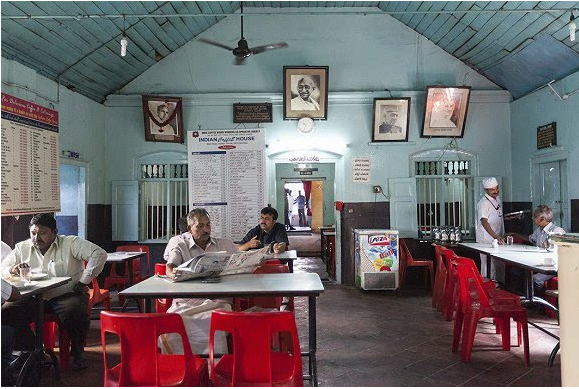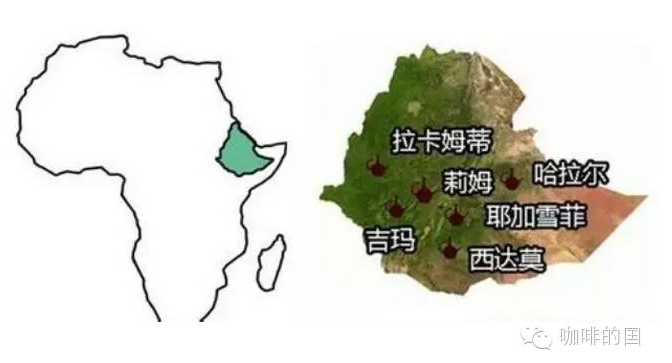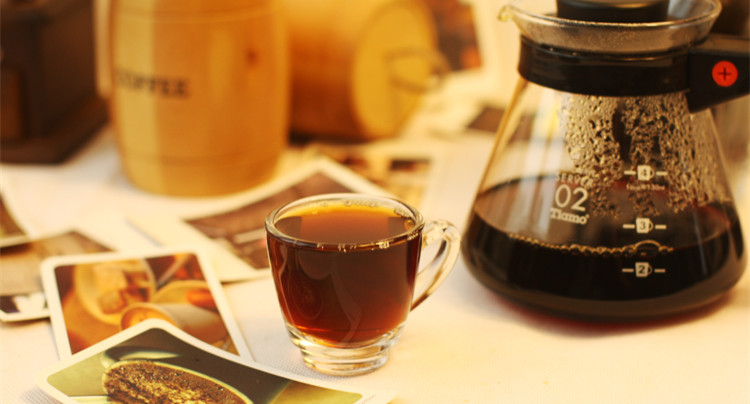The Indian Cafe is a flowing feast.
Stuart Freedman was stunned when he first set foot on the soil of Delhi in the mid-1990s. The London-based photographer has been to South Asia and the Middle East, but the bustling Indian capital still caught him off guard. So when he found himself on the spacious and comfortable steps of the Indian cafe (Indian Coffee House) on Baba Kharak Singh Marg Street, he felt like a refugee.

Indian Cafe (Photo: Stuart Freedman) "everyone is polite and the pace of life is not fast." Many years later, regular customers of the cafe told me that the cafe is a 'safety valve' where you can go in and out, talk freely, or just stay quietly. " Freedman wrote in an email.
In the next few years, whenever he had a chance to pass through India for work, Freedman would stop for a while in the domestic cafe outlets owned by these workers. But it wasn't until 2010, when Freedman learned that the cafes in Delhi were in danger of closing down, that he came up with the idea of filming them.
"the more I know, the more I want to know why these shabby little places get so much attention," Freedman said. I think this will be an excellent collection of works. "
Shimla's Indian Cafe (Photo: Stuart Freedman)
Left: Mr. Kumar, a regular customer of the Indian Cafe in New Delhi. Right: Kolkata's Indian Cafe (Photo: Stuart Freedman)
Kolkata's Cafe of India (Photo: Stuart Freedman) in September, Dewi Lewis Publishing House published Freedman's collection, the Palace of memory: the Story of the Cafe in India (The Palaces of Memory: Tales From the Indian Coffee House). Freedman spent five years filming more than 30 of the best-looking and best-known cafes in India.
In the 1940s, the Coffee Council of India (India's Coffee Board) set up coffee stands and later set up a number of Indian cafes across the country. In these cafes, you can often hear people talk about Indian art masters such as Satyajit Ray, Ritwik Ghatak and Subhash Mukhopadhyay. Scholars also often meet in cafes in Kolkata. During the Indian independence movement, politics was also a hot topic in cafes.
Freedman said, "so this cafe and even cafes across the country are actually a combination of the cafe on the left bank of Paris and the Ahwas cafe in Cairo. Interestingly, each cafe has its own unique atmosphere. There are often hordes of lawyers in the cafes of Shimla and Allahabad, while in Delhi you are more likely to see politicians and journalists. Now, the cafes in Delhi also attract a large number of enthusiastic young students and activists. "
But in the 1950s, the Indian Coffee Council closed some of these cafes. After that, A.K. Gopalan, the leader of the Communist Party of India, changed the cafe into a workers' cooperative society. Now, some of them are happy and others are sad. In northern India, people are experiencing "American-style capitalism", and these cafes are becoming increasingly out of date, linked to the era of Nehru-style socialism. In southern India, cafes serve meals, which are more similar to restaurants. Cafes in Delhi are also busy competing with "ambitious cafes" in the West, such as Starbucks.
Left: Chertala's Indian Cafe right: Jaipur India Cafe waiter Mr. Sri Kumar
(photo source: Stuart Freedman)
The Indian Cafe (Photo: Stuart Freedman) in the Kottayam Market is a microcosm of India's history and contemporary changes, but for Freedman, they are a window into the daily lives of Indians.
"as a young journalist, the cafe is the first step for me to enter India. The culture here is complex, and the cafe provides an entrance. People's impression of India is nothing more than such platitudes-too ridiculously novel and too poor to be true-but India seen in cafes is just the opposite. I doubt that journalists who claim to "know" India-or, indeed, those who claim to know any country-I will not pretend to know a lot about the country, but in the cafes here, the answers can be found in ideas and ideas that you hear bewildered on the street. "
Tagore Portrait of Kolkata Cafe India (Photo: Stuart Freedman)
Left: Indian Cafe in Kolkata right: Indian Cafe in New Delhi (Photo: Stuart Freedman)
(translated by Pan Jinhua)
Important Notice :
前街咖啡 FrontStreet Coffee has moved to new addredd:
FrontStreet Coffee Address: 315,Donghua East Road,GuangZhou
Tel:020 38364473
- Prev

Reading the third Wave of Coffee from Yega Xuefei's past Life and this Life (I)
Jiaxiang Guide: Yega's beans are definitely a hot spot in Ethiopia in recent years, and they seem to represent the third wave of coffee. Why is it suddenly popular? The following brings you to read the third wave of coffee from Yega Xuefei's past life and this life. Now when it comes to Ethiopian coffee beans, the first reaction of most coffee lovers is Yega Xuefei, and the other reactions may be nothing more than Harald.
- Next

"junk Cafe" has more than 120 stores around the world.
According to Xinhua News Agency, when Adam Smith, a former chef, opened the first junk cafe in Leeds, England, to provide guests with food that should be thrown into the dustbin, he must have no idea that just two years later, this kind of cafe has spread all over the world. There are 120 cooperative stores in Australia, South Korea, France, the United States, Nigeria and other places. The so-called junk cafe means that most of the ingredients in the shop come from.
Related
- What effect does Italian American coffee with filter paper have? Will coffee taste better if it is put on filter paper at the bottom of the powder bowl?
- What is the color difference in coffee beans? What are the characteristics of honey processed coffee beans? Why are the anaerobically treated coffee beans uneven in color?
- How does novice Xiaobai quickly get started and make coffee? Newbies learn to make coffee by hand and share the specific steps and process process!
- Costa tea has a shelf life of 100 years?! Expert: Unable to verify
- It's a huge uproar! American milk addition was rejected by Manner employees?!
- Mocha pot coffee bean recommendations| How fine and how much powder should be used for grinding? What parameter ratios do I need to use to make milk with Mocha pot coffee?
- What are the characteristics of the world's top ten coffee beans treated with Costa Rica honey? How to make black honey kadura from Tarazhu Pilon Processing Plant taste good?
- How to make deep-roasted coffee? What grinding water temperature does authentic Jamaica Blue Mountain No. 1 coffee use to brew it well?
- Selected high-grade rose summer coffee flavor tasting guide Why Panama rose summer has the aroma of flowers and fruits
- What equipment does a novice Xiaobai need to buy to learn to make coffee? Filter cup electronic scale bean grinder manual flushing pot purchase guide

